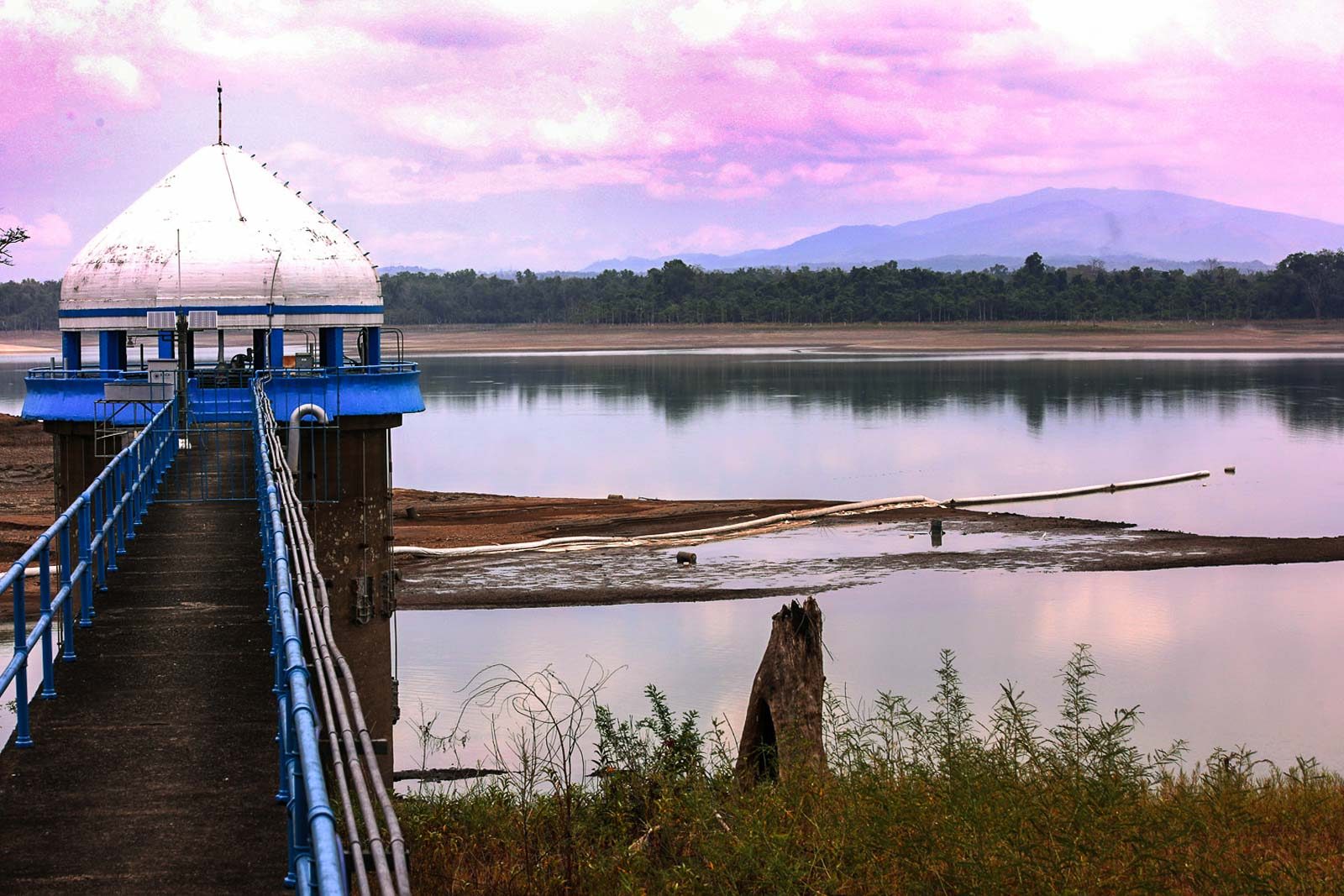SUMMARY
This is AI generated summarization, which may have errors. For context, always refer to the full article.

MANILA, Philippines – It’s time to stop pointing fingers, Metropolitan Waterworks and Sewerage System (MWSS) Administrator Reynaldo Velasco said, as time used for the blame game should be spent instead on trying to secure enough water supply.
In a press briefing on Wednesday, March 13, Velasco listed short-term and long-term measures both the MWSS and water concessionaires will be undertaking.
While most of these were already announced by West Zone concessionaire Maynilad Water Services and East Zone concessionaire Manila Water last Tuesday, March 12, the MWSS chief said they also plan to implement a 50-year master plan.
This includes securing areas for fresh water supply so that “we will not [have to] wait for 40 years for another water source,” Velasco said.
“[W]e want to provide the next generation of whoever will sit down here in MWSS [with] a master plan. Because if they have a master plan, they will be able to fix whatever is needed to fix,” he added.
Velasco also said that an “executive group” will be set up to work on both long-term and short-term solutions.
Currently, the government is trying to develop the controversial New Centennial Water Source-Kaliwa Dam project. It is targeted for completion by 2023.
The Kaliwa Dam was a public-private partnership project under the Aquino administration. It has since become a China-funded project under the Duterte administration.
As soon as the Kaliwa Dam becomes operational, 450 million liters per day (MLD) of water out of 600 MLD will go to Manila Water, while the remaining 150 MLD will be given to Maynilad.
Once Manila Water’s supply issue has been fixed, the 600 MLD would be split evenly between the two utility firms, Velasco said.
Other water sources
Another MWSS goal is for each concessionaire to have its own sources of water. Velasco said they are working on other sources, such as the Wawa Dam.
“[B]ut eventually, it will come together for another 10- to 15-year program,” he added.
“Because the end of the concession is 2037. So for us, we are focused up to 2037. But beyond that, we have to go further.”
Velasco noted that building a dam takes years – around 6 to 10 years for clearance alone, and another 3 to 4 years for the actual construction.
The MWSS also recognizes that there would have to be other ways to get water, since dams have an environmental impact.
“For now, we are studying rainwater saving, but that’s for limited areas [only],” Velasco said.
“I am waiting for somebody to give me a very good feasibility study that will hopefully be a better alternative than what we are doing now.”
Aside from relying on the Angat Dam, which can supply a total of 4,000 MLD for both concessionaires to use, Maynilad has been sourcing water from Laguna de Bay through its Putatan Water Treatment Plant.
Maynilad president and chief executive officer Ramoncito Fernandez noted that Laguna de Bay serves as the largest water source for the region.
But he said it is difficult to source clean water from the lake due to the fish pens and environmental hazards from establishments nearby.
Manila Water president and chief executive officer Ferdinand dela Cruz said they have been looking for new water sources even before the current shortage.
“This is not the time to blame whatever happened in the past, but all I can say is that Manila Water was not remiss in looking for new sources of water for a long, long time,” he said.
“Right now, we are just drawing small amounts from the lake…. In the meantime, our focus is on making sure that our customers affected by the current situation get help from us.”
Fixing waterways
Aside from this, the MWSS asked both concessionaires to partner up to build a conveyance tunnel which can accommodate 2,400 MLD.
This is due to the current tunnels leading to the La Mesa Dam, which were built more than 50 years ago, being in bad shape.
“This is one reason why Manila Water is not getting [the entire] 1,600 million liters per day. It is not that easy to put a tunnel or aqueduct,” Velasco said.
dela Cruz said that they have a current deficit of 150 million liters per day (MLD) of water.
— Anna Mogato (@AGAMogato) March 13, 2019
Manila Water’s actual demand: 1,750 MLD
Supposed supply from Angat:1,600 MLD
Actual supply: 1,550 MLD |@rapplerdotcom
Coupled with MWSS’ own project to course up to 2,400 MLD of water through another aqueduct, a total of 4,800 MLD can be added to the water supply for Metro Manila.
“If this will happen, we hope we can now save some of the water we are throwing away during rainy days from Angat Dam. We can save this for La Mesa,” Velasco said. – Rappler.com
Add a comment
How does this make you feel?
There are no comments yet. Add your comment to start the conversation.